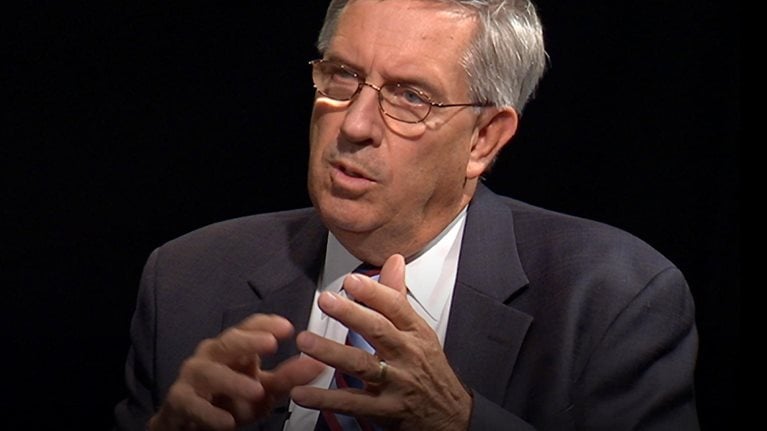Management literature is rich with analysis of the first 100 days of a CEO’s tenure. Far less attention has been paid to a CEO’s last 100 days. We haven’t conducted systematic research on this topic, but we have seen quite a few CEO transitions over the years. And everything we’ve observed suggests that continuing to act as CEO until the very last day boosts the odds of leaving a company in the best shape possible and strengthening the legacy of the departing leader. Typically, in our experience, that legacy isn’t fully defined until two years or so after the CEO steps down—and it’s much more satisfying to be remembered for making tough, even unpopular, decisions that ultimately prove valuable than to leave on a high note that isn’t sustained.
In most cases, incumbent CEOs know when they are likely to leave, and there is usually some time—three months to a year—between the announcement of their departure and the new CEO’s start date. Many departing CEOs view this as a time to step back and avoid making major decisions or stepping on the toes of their successors. While this instinct is understandable, it reduces the likelihood of leaving the new CEO with several important advantages: a clear strategy, plenty of operating momentum, a strong management team, and a clean slate, including the firm resolution of any major outstanding operational or people challenges.
There’s no simple list of actions departing CEOs should take; planning the outgoing transition is more art than science. And of course, each individual must find a transition style that’s consistent with his or her personality and the organization’s culture. That said, we’ve seen several CEOs benefit from asking themselves a few straightforward questions. The answers allow departing CEOs to create a short list of crucial actions to complete in their last days with a company.
Would I undertake any strategic or major organizational shifts if I had three more years ahead of me?
An incumbent CEO is likely to be knowledgeable about the strengths and weaknesses of the organization’s current strategy and operations, as well as any changes that are warranted. If the incumbent doesn’t act, a year or more could elapse before the new CEO is ready to do so. And in most industries today, that kind of delay can be costly. For example, a few years ago the CEO of a major high-tech firm retired without establishing clear strategic priorities for the next few years. This casual handoff, combined with the rapid pace of change in the industry and the new CEO’s failure to get up to speed quickly, proved dangerous. Just two years into the new CEO’s tenure, the company was lagging so far behind competitors it had to be restructured.
By contrast, the outgoing CEO of a major food and beverage company continued to push a hostile takeover—the company’s largest acquisition ever—until his last day. His successor was able to complete the deal quickly and gained a strong competitive advantage thanks to the outgoing CEO’s persistence. And at a logistics company, the departing CEO began a major strategic review just a few months before he left. The result was the revelation of significant weaknesses, most notably in a large business unit whose strategy was adrift. This review led that CEO directly to the next question.
Which people decisions would I make now if I had to stay for three more years?
All CEOs are concerned with the depth of talent in their organizations, particularly on the leadership team. Most are constantly trying to upgrade it, and many have a couple of replacements at the ready. Nothing is easier than not making tough decisions near the end of one’s term, falling back on the excuse that the new CEO should be free to build his or her own team. Yet such thinking can be disadvantageous to the incoming leader—who is always free to make changes and generally will benefit from starting with the strongest possible team. Sometimes the right approach means making a tough decision that will, essentially, clean the slate for the new CEO.
The outgoing CEO at the logistics company above, for example, realized he had to fire the head of the major business unit, who had been a colleague for 15 years. By doing so, he was able to take the first step toward setting that unit on a more profitable path. We also suspect that he improved his own legacy by making this decision as soon as its necessity became clear.
Does the company have sufficient operational momentum to deliver strong results this year and next?
Strong performance over time requires that companies both create and respond to change: internal changes, such as new targets and initiatives, and external ones, like new market conditions and customer needs. The departing CEO should ensure that her company has a robust pipeline of activities to understand and implement change, as well as to build needed capabilities. Some activities will surely be aimed at growth, but they don’t all have to be. A transportation company CEO, for example, implemented the second phase of a major cost-cutting initiative just before leaving. His successor had a far more manageable cost base when he came in.
Organizations also have a natural tendency to lose time during CEO transitions because individuals focus on topics such as what the change means for them and what the new CEO is like. One way we’ve seen companies avoid slowing down is for the departing CEO, together with the management team, to document her current plans in detail, with specific accountabilities and performance milestones. That plan is then shared with the board, so the directors know where the company stands, and with her successor if one has been named. The departing CEO of a major transportation company, for example, decided not to hold a traditional last board meeting, with speeches and champagne. Instead, the CEO and his successor focused on the current status of the company and its plans and objectives for the next 12 months.
What do I wish I had understood better when I started in the job?
If the new CEO comes from outside the company or the industry, she will certainly have a fresh perspective; indeed, that is one major reason companies choose such a CEO. But in this situation, the departing CEO should pay particular attention to introducing her to the business. What’s most crucial are tips that no one else could know. Such insights rarely emerge from typical new CEO “integration” programs, which in practice are largely ceremonial.
The outgoing CEO can help immensely by arranging meetings for the new leader with people who would not otherwise be on her radar screen but may be able to point out unexpected land mines. Think of this as an integration program with an edge: talking with several analysts who have proved themselves thoughtful critics of the company, sitting down with senior executives from a few major ex-customers who might be willing to tell the new leader things they’d previously held back about their defection, getting views from a union leader or two who will tell it like it is. Such discussions can be invaluable, and they are unlikely to happen unless the outgoing CEO mines his memory bank for a short list of high-impact discussion partners.
What’s my plan for the last 100 days?
Answering questions like the ones above can help outgoing CEOs set a priority list for their last 100 days. These questions helped one recently departed CEO whittle down a list of 25 ongoing high priorities to the following 5, chosen because of their potential financial impact or because they were areas he felt he needed to clean up rather than leave as unpleasant tasks for his successor.
Explore alternative organizational models for the largest business unit.
Start concrete work on e-commerce, taking inspiration from competitors X and Y.
Secure best-practice methodology to maximize the return on the company’s impending €500 million investment in support infrastructure.
Analyze the advantages and consequences of acquisition Z, which the company has long discussed but never rigorously assessed.
Accelerate efforts to reduce sourcing costs by 20 percent and implement proposed reductions in administrative and overhead costs.
We recognize that delivering on priorities such as these requires concentrated effort and might strike some departing CEOs as wading too far into their successors’ territory. Yet in the few instances where we’ve seen CEOs take an active and structured approach to their last 100 days, it has been an invaluable gift to the company and to the new CEO. It also, we sense, means fewer sleepless nights for the former CEO, who will care about the company long after he has left and will rest better knowing he did all he could until the very last day.


